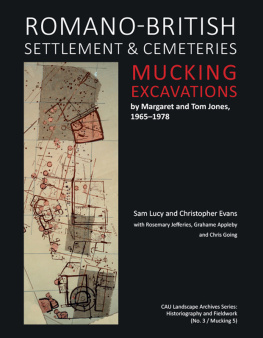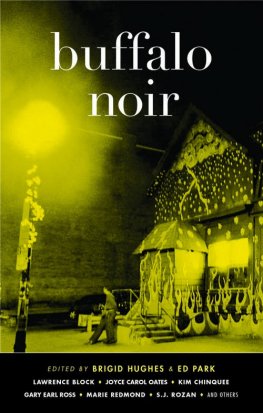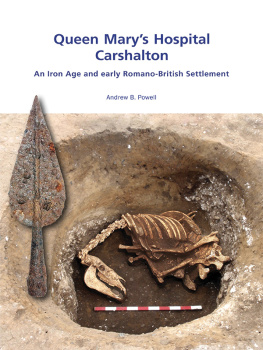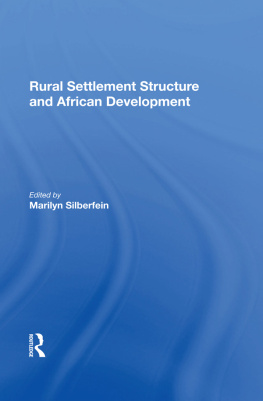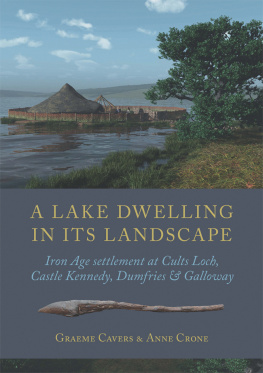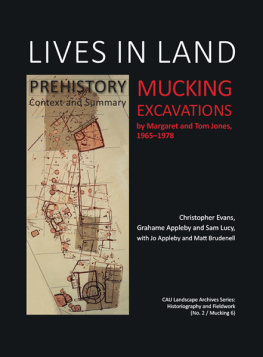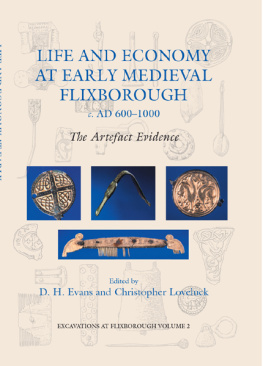
Romano-British Settlement and Cemeteries at Mucking
Romano-British Settlement and Cemeteries at Mucking Excavations by Margaret and Tom Jones, 19651978
Sam Lucy and Christopher Evans with Rosemary Jefferies, Grahame Appleby and Chris Going
With contributions by
Jo Appleby, Donald Bailey, Paul Barford, Joanna Bird, David Buckley, J. Cooper, Leslie Cram, P.E. Curnow, Brenda Dickinson, Geraldine Done, Kay Hartley, Colin Haselgrove, Martin Henig, Frank Jenkins, Catherine Johns, Ruth Leary, Hilary Major, Graham Morgan, Quita Mould, Richard Reece, Krish Seetah, Nicole Taylor, Marijke van der Veen, David Williams, and the late Dorothy Charlesworth, Elizabeth Crowfoot, John Evans, Donald Harden and Margaret Jones
With graphics by
Andrew Hall, Vicki Herring, Iain Forbes, Jane Matthews, Joanna Bacon and Amanda Balfour
Published in the United Kingdom in 2016 by
OXBOW BOOKS
10 Hythe Bridge Street, Oxford OX1 2EW
and in the United States by
OXBOW BOOKS
1950 Lawrence Road, Havertown, PA 19083
Oxbow Books and the individual authors 2016
Hardcover Edition: ISBN 978-1-78570-268-6
Digital Edition: ISBN 978-1-78570-269-3
Mobi Edition: ISBN 978-1-78570-270-9
A CIP record for this book is available from the British Library
Library of Congress Cataloging-in-Publication Data
Names: Lucy, Sam, author. | Evans, Christopher, 1955- co-author. | Jefferies, Rosemary, co-author.
Title: Romano-British settlement and cemeteries at Mucking : excavations by Margaret and Tom Jones, 1965-1978 / Sam Lucy and Christopher Evans with Rosemary Jefferies, Grahame Appleby and Chris Going ; with contributions by Jo Appleby, Donald Bailey, Paul Barford, Joanna Bird, David Buckley, J. Cooper, Leslie Cram, P.E. Curnow, Brenda Dickinson, Geraldine Done, Kay Hartley, Colin Haselgrove, Martin Henig, Frank Jenkins, Catherine Johns, Ruth Leary, Hilary Major, Graham Morgan, Quita Mould, Richard Reece, Krish Seetah, Nicole Taylor, Marijke van der Veen, David Williams, and the late Dorothy Charlesworth, Elizabeth Crowfoot, John Evans, Donald Harden and Margaret Jones ; with graphics by Andrew Hall, Vicki Herring, Iain Forbes, Jane Matthews, Joanna Bacon and Amanda Balfour.
Description: Oxford ; Philadelphia : Oxbow Books, [2016] | Includes bibliographical references and index.
Identifiers: LCCN 2016019905 (print) | LCCN 2016021371 (ebook) | ISBN 9781785702686 (hardcover) | ISBN 9781785702693 (digital) | ISBN 9781785702693 (epub) | ISBN 9781785702716 (pdf) | ISBN 9781785702709 (mobi)
Subjects: LCSH: Mucking (England)--Antiquities. | Excavations (Archaeology)--England--Mucking. | Romans--England--Mucking--Antiquities. | Britons--England--Mucking--Antiquities. | Human settlements--England--Mucking--History--To 1500. | Cemeteries--England--Mucking--History--To 1500. | Social archaeology--England--Mucking. | Landscape archaeology--England--Mucking. | Jones, M. U. (Margaret Ursula), 1916-2001. | Jones, Tom, -1993.
Classification: LCC DA690.M953 L83 2016 (print) | LCC DA690.M953 (ebook) | DDC 936.2/678--dc23
LC record available at https://lccn.loc.gov/2016019905
All rights reserved. No part of this book may be reproduced or transmitted in any form or by any means, electronic or mechanical including photocopying, recording or by any information storage and retrieval system, without permission from the publisher in writing.
For a complete list of Oxbow titles, please contact:
UNITED KINGDOM
Oxbow Books
Telephone (01865) 241249, Fax (01865) 794449
Email:
www.oxbowbooks.com
UNITED STATES OF AMERICA
Oxbow Books
Telephone (800) 791-9354, Fax (610) 853-9146
Email:
www.casemateacademic.com/oxbow
Oxbow Books is part of the Casemate Group
Front cover: Early phasing dye-line showing Bronze Age ditches and Iron Age roundhouses and enclosures (Prehistory Volume, Figure 2.1).
Acknowledgements
There are many people to whom we owe a debt of thanks in the preparation of this volume. First must, of course, come our funders. English Heritage (now Historic England), under the Aggregates Levy Sustainability Fund, supported both the first stage of the project and the costs of this publication, and we remain grateful to Kim Stabler, Kath Buxton and Barney Sloane for their interest and enthusiasm throughout. The second stage of the project was jointly funded by the British Museum, the Roman Research Trust and the Society of Antiquaries of London. At the British Museum, we would like to thank J.D. Hill, firstly for his initial approach to the CAU for involvement in the Mucking publication project, and secondly for his unceasing support and encouragement, alongside that of Jonathan Williams. John Pearce, as well as being an invaluable source of information on Roman cemeteries, assisted with our applications to the Roman Research Trust, and we would like to record our thanks to both. The Society of Antiquaries of London, who were serendipitously able to fund much of the analytical work of the project through the Jones Bequest, have also provided valuable support, and we are particularly indebted to David Gaimster, John Lewis and Martin Millett.
On starting this project, we were faced with a mass of archival data and artefactual material to make sense of. There are many people to acknowledge for their help with that. Firstly we must record our thanks to the British Museum/English Heritage post-excavation team: Ann Clark, John Ett and Chris Going, who made their personal archives available to us, and did much to help us understand the various phases of post-excavation research (i.e. who had done what, when and why). Members of the original MPX (Mucking Post-Excavation) team established by Margaret and Tom Jones also provided invaluable assistance. We would particularly like to thank Jonathon Catton, Ruth Leary (ne Birss), Paul Barford and Helena Hamerow for illuminating discussions and helpful information. While not directly part of MPX, Mark Hassall, Warwick Rodwell, Isobel Thompson, Nigel Brown, Val Rigby, Leslie Webster, Ian Bailiff and Sarnia Butcher all helped with information relating to the earlier phases of work, as well as, of course, Sue Hirst, who helped with information on the Anglo-Saxon cemeteries at Mucking. Our utmost thanks here, however, must go to Rosemary Jefferies (now Arscott) for her assistance both with the preparation of this volume, but also in helping us to make sense of the archives. She has been unfailingly generous with her time and her detailed knowledge of Roman pottery, kiln studies and Roman archaeology in general.
Others have also assisted us in the collation of data. Within English Heritage, we would like to thank Claire Jones and Kirsty Stonell-Walker for providing copies of old AML reports relating to Mucking; Justine Bayley for tracking down old reports (and samples!) and Simon Crutchley for answering queries on aerial photographic coverage. Within the British Museum, our thanks go to Tony Spence and Cyril Sylvestre, for helping us track down data tapes, to Matthew Harvey for facilitating access to British Museum archives for the project, and particularly to Marta Flanelly and Elena Jones, who showed unceasing patience and humour during our periodic archival rummages.
Being able to retrieve the data from the MPX computerisation project was the real key to being able to produce the site interpretations presented here, and there are several people to thank. Primarily, our gratitude goes to Graeme Mowbray, Richard Richner and Debbie Williams of eMag Solutions Ltd, who managed to turn archive boxes of eight-inch floppy disks last saved in 1983 into readable data (thanks must also go to Mike Lucy for identifying them as data retrieval experts). Mark Tomsett wrote the VBA code that converted this data into usable Excel spreadsheets. Catherine Hardman and Tim Evans of the Archaeology Data Service were extremely helpful in offering advice on data format and storage.
Next page
